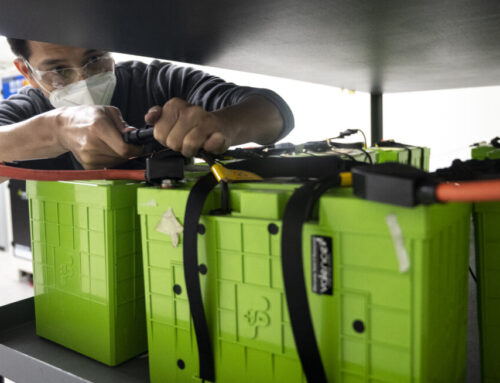Investors are betting $21 billion that the energy transition isn’t going away
October 10, 2025
The energy transition is seemingly under assault, with Congressional Republicans killing tax credits for clean energy and the Trump administration threatening to cancel billions of dollars worth of grants.
But there are signs the setback might not be as catastrophic for the transition as the headlines make it sound.
Investor sentiment, which judging by the size of two new funds, remains strong. And more founders are pouring into the sector. The upshot: people and organizations are betting money and time that the energy transition isn’t going away.
This week, Brookfield announced it had raised $20 billion for its second energy transition fund. The infrastructure investor has already deployed $5 billion of that money into renewable power projects and developers focusing on solar, wind, and battery storage.
Perhaps more notable is the fact that Brookfield raised 33% more money this time around than it did for its first transition fund in 2021, when zero percent interest rates and a frothy economy led some to speculating that clean energy was entering a bubble. This second, larger fund raised in a less exuberant period suggests that limited partners see durable growth ahead.
Also this week, Energy Impact Partners announced it had closed its third flagship fund with $1.36 billion in commitments, some 40% larger than the previous one. EIP is a venture fund that invests after early stage startups prove their mettle; the median size of a round it invests in is $26 million, according to PitchBook.
Climate tech — or whatever people are calling it these days — has seen an uptick in new founders flocking to the sector over the past five years, driven by a changing climate that became too hard to ignore for many. Not all of those will have survived (such is the nature of early stage startups), but enough have made it that investors see opportunity in funding the next stage of their growth.
Techcrunch event
San Francisco
|
October 27-29, 2025
Already, EIP has deployed about a quarter of its new fund to companies like GridBeyond, which helps manage distributed energy resources, and Quilt, a consumer-facing heat pump manufacturer.
Investing trends that have developed the past decade remain strong. Since 2014, large LPs like pension funds and endowments have committed nearly $1 trillion to the energy transition. And while climate tech VCs are on track to raise about as much as last year, they’re outpacing the broader venture world, securing a larger percentage of commitments. This year, they’ve raised 3.8% of all venture capital, nearly double their share in 2020, according to PitchBook.
In the U.S., there are headwinds in the near term.
The Trump administration is openly opposed to the idea of an energy transition, and it is doing its best to undermine what progress has been made. As a result, the International Energy Agency has revised downward the forecast for renewable adoption in the U.S., predicting that the rollout between now and 2030 will be 45% lower than the agency had predicted last year.
Despite that, renewable capacity worldwide is expect to double by 2030, led by solar installations in the China, India, the EU, and Subsaharan Africa.
The IEA isn’t the only organization predicting that the transition will continue. Analysts at DNV expect that renewables will provide 65% of the world’s electricity by 2040 and nearly all of it by 2060.
It won’t be enough to hit net-zero carbon emissions by 2050, DNV said. But few transitions are without their ups and downs, and the momentum appears to favor more renewable energy, not less.
Search
RECENT PRESS RELEASES
Related Post


